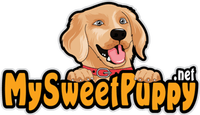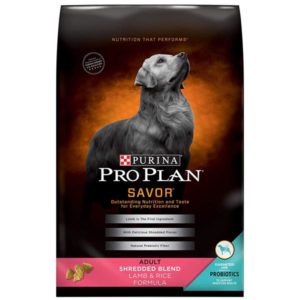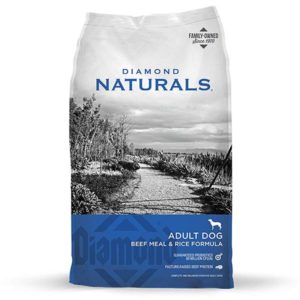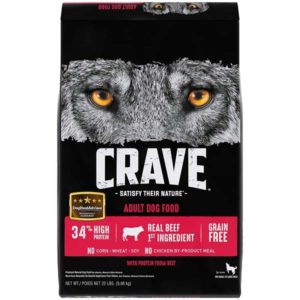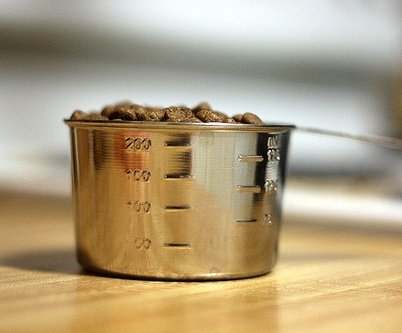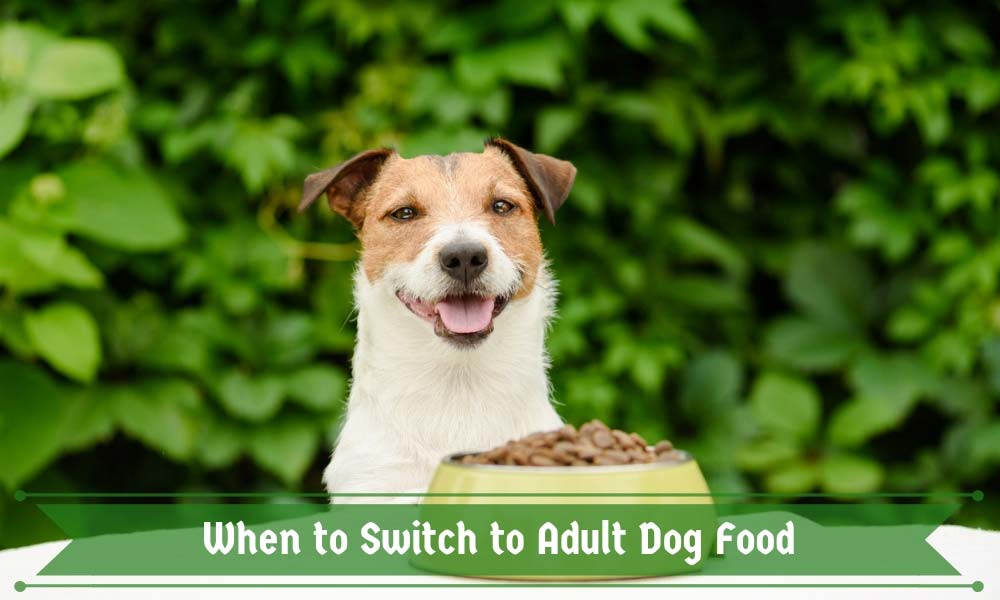
Just like a human child and human adult have a different metabolism and biology, so too do a puppy and an adult dog. As a general rule of thumb, dogs under one year old are considered puppies. Puppies require a specific blend of nutrients to make sure they grow and develop properly. They are also extremely energetic and require high-calorie and high-protein diets.
By the time your puppy reaches adulthood, they will need to switch their kind of food. It can be a bit difficult to get a now-adult dog keen on adult food. It can also be a bit tricky to get their body used to digesting a blend meant for older dogs. This guide will cover the basics of switching your dog to adult food: what the difference is, when to switch, how to switch, and what some of the best adult dog food brands are.
Contents
What Is the Difference Between Puppy Food and Adult Dog Food?
First things first, let’s talk about the differences between the two kinds of blends.
Puppy food tends to have higher concentrations of proteins, specific amino acids, and certain fat and minerals than adult dogs. This certain nutritional blend is meant to promote healthy growth and development. For example, many puppy foods have higher concentrations of omega-3 fatty acids, which are known to promote healthy brain and eye development. Puppy food also is more calorie dense than adult dogs as puppies tend to expend more energy, and puppy food has more minerals like calcium to promote healthy bone growth.
Puppy food composition differs depending on the size of the dogs. Large breed dogs, like labs, for instance, require more proteins for stronger muscles to support their larger frames.
Adult dog food, in contrast, has a more balanced blend of nutrients. It is not a good idea to feed adult dogs puppy food. Puppy food has a higher calorie and fat content, which can lead to rapid weight gain in adult dogs. Adult dogs also need specific nutrients to maintain body and cellular structures, without which they can develop degenerative conditions like hip dysplasia and orthopedic problems.
When to Switch Your Puppy to Adult Food
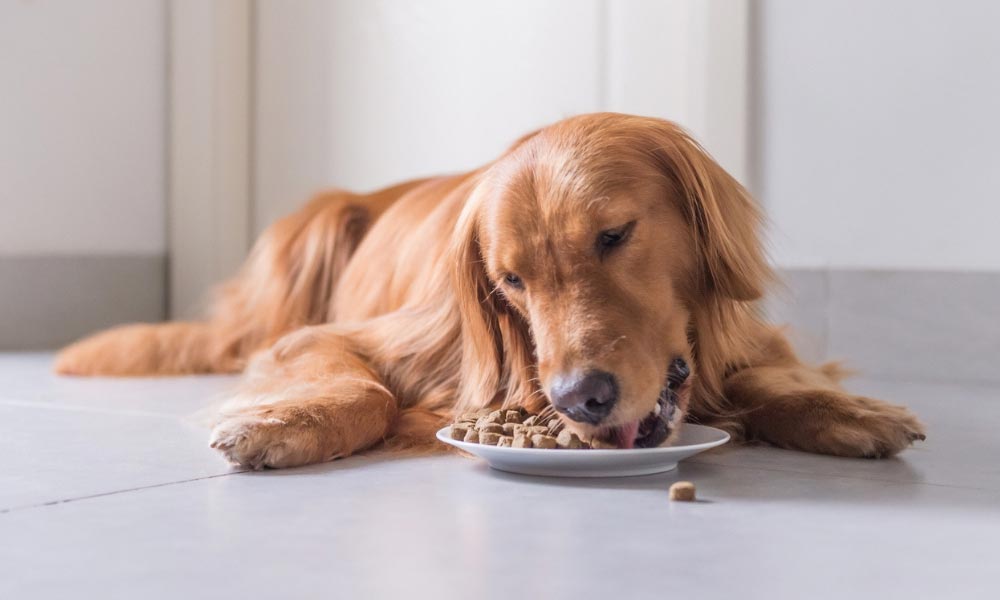
The exact time to switch your puppy to adult food depends on the size of the breed. In general, smaller dogs can be switched over earlier, and larger dogs need to eat puppy food for a longer amount of time.
- Dogs up to 30 lbs tend to mature at around 10 to 12 months. Smaller miniature breeds can mature as early as 7 or 8 months.
- Mediums breeds (<80 lbs) take around 12-16 months to mature
- Larger breeds (>80 lbs) usually take anywhere from 16-18 months. The biggest dog breeds can take up to 2 years (24 months) to reach adulthood.
The reason for this time difference is the larger amount of biomass larger dog breeds must accrue. Simply put, bigger dogs require more stuff to run their bodies and more stuff to grow to full size. If you are unsure of when exactly to switch your pet over, consult your veterinarian.
The point in time to switch your dog’s food is usually around the same time they get spayed or neutered. Spayed and neutered pets produce fewer hormones, and so have fewer energy requirements. Generally speaking, a puppy’s energy level should drop immediately following the surgery.
You can tell when it’s time to make the switch if your puppy stops finishing all of its meals or begins nosing at its food. This means that their daily calorie requirement has lowered and is a good sign they have reached physical maturity. As always, if you are unsure of anything talk to your veterinarian.
Adult dogs also require more food than puppies. The average serving size for a puppy of a mid-size breed is about 1 to 1 ½ cups per meal. Adult dogs usually require two or more cups of food per serving.
How to Make the Switch
Switch Slowly
Puppy food tends to have a more intense taste than adult dog food. That is one reason why it can be hard to get them to switch over willingly; they still like the taste of the high-calorie high fat puppy food and don’t want to switch to a blander taste.
Here’s one way to facilitate the switch: introduce it gradually. Don’t try to make the full switch during one mealtime. Start by putting a small amount of dog food in the puppy food, so they get used to the taste. As time goes on, replace more and more of the puppy food until it is all adult dog food. Making the switch can take anywhere from two weeks to a month. It is a good idea to start gradually switching them over once they reach about 80% of their full body weight.
Cut Down on Mealtimes
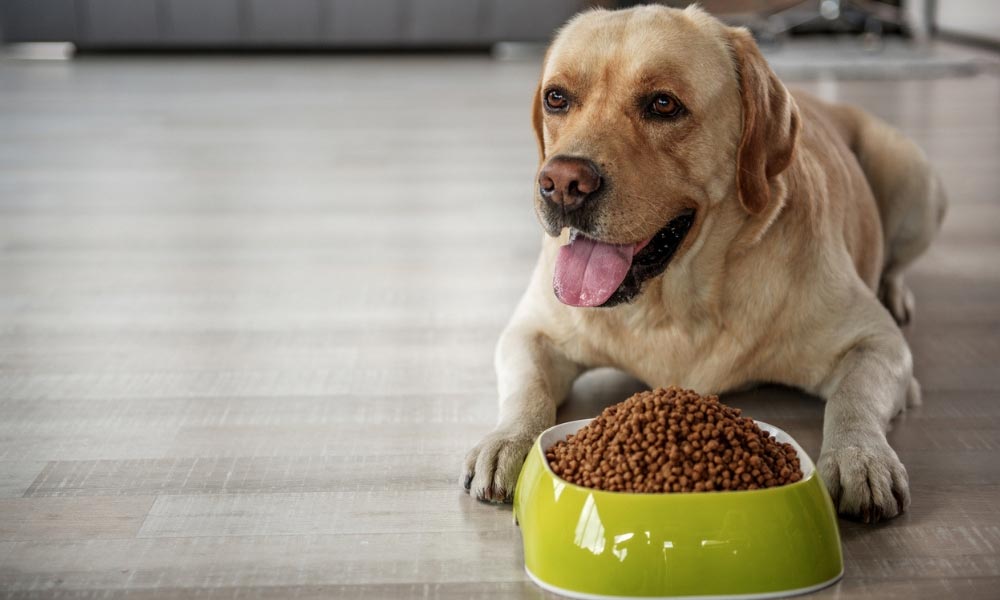
Growing puppies have a higher metabolism and require more frequent feeding. Generally, puppies should be fed about three times a day, breakfast lunch, and dinner. When you switch to adult food, you should cut down meals to only two a day; once in the morning and again in the evening. Since adult dogs have slower metabolisms, they do not need to be fed as frequently throughout the day.
Add Things to Get Them to Eat
Even with gradual switching, it can be hard to get your dog to eat all of its adult food. Adding extra goodies to their meals will help them get used to eating a larger amount of food. Raw eggs, for example, are a great add-in to get dogs to eat all of the food in their bowl. Just crack an egg or two and mix it in with their kibble. Eggs are also a good source of protein and are good on their own terms as well!
Routine Schedule
By this time, your dog should be used to eating on a regular schedule. If they are not, it is all the more important to get them used to a regular eating routine when you switch to adult dog food. A good schedule is to first feed at 8 AM and then again at 5 PM. This food schedule also tends to fit into people’s work schedule well. Keeping a routine makes mealtime go easier and make your dog more disciplined.
Free Eating vs. Scheduled Eating
There is a current debate among dog owners on the merits of free eating vs. scheduled eating. Free eating consists of laying the food bowl down and giving the dog as much time as they need to finish it. Scheduled eating consists of giving the dog only a certain window of time to eat during mealtimes.
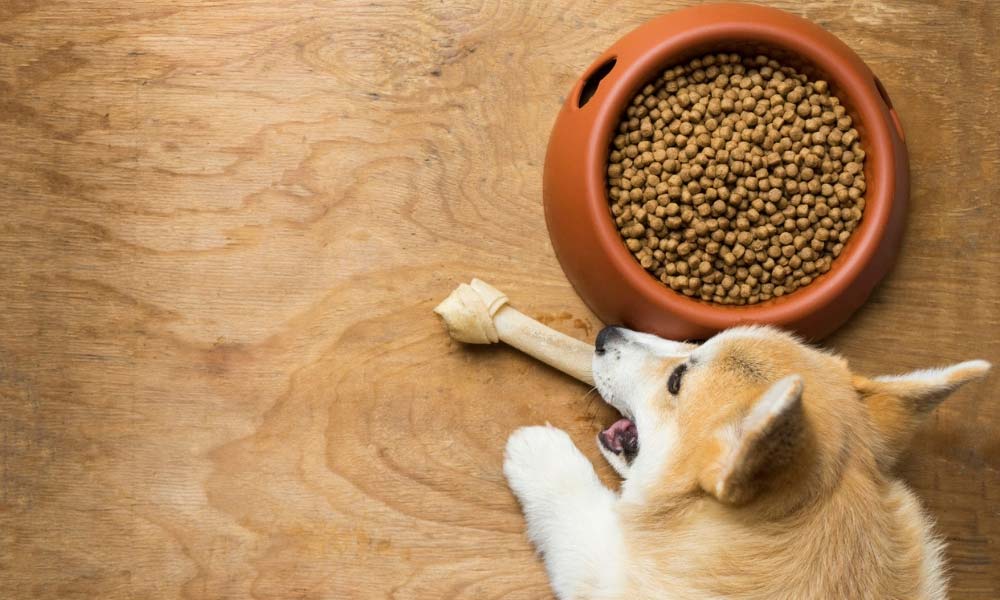
Both have pros and cons. Free feeding allows your dog never to feel famished, but some breeds, particularly larger breeds, may overeat. Free feeding also cuts down on food guarding issues as food is generally always available. Free eating can make it difficult to gauge your pet’s bathroom schedule, which can make potty training hard.
Scheduled feeding primarily is about getting your dog on a strict schedule. You place the bowl on the floor and give them 30 minutes to eat. Feeding this way makes it easier to judge when they have to go to the bathroom and makes it easier to control portions. Scheduled feeding can make your dog eat too fast or be overly aggressive, guarding its food.
There is no generally correct answer here on which feeding method to use. Different breeds with different temperaments adapt differently. Cattle dogs, for example, do well with continuous feeding and are good at not overeating. Labradors, on the other hand, tend to eat whatever is in front of them and may best benefit from a scheduled feeding method.
Extra Tips to Make the Process Go Smoother
- It helps to initially monitor their food intake to make sure they are getting the right amount of food. Once you have made sure they are used to the food you can let them eat without direct supervision
- In general, it will take a week or two for a puppy’s digestive system to get used to the new blend of food. As such, when initially making the switch your near-adult dog mayhave to take more frequent bathroom breaks than normal. Switching food can also make your puppy a bit gassier. Making the switch gradually will cut down on these issues. If switching your dog’s food blend causes diarrhea, see your vet for help making a specific meal plan that won’t hurt your dog’sGI tract.
- If you have other older dogs, keep your puppy separate from them while you are trying to get it to switch. This prevents the other dogs from eating food that’s not theirs and prevents conflict and aggression from food guarding. Once your dog gets used to adult food, you can feed all of them together.
- It may take some time to find the right kind of adult food. If getting them to switch is just not working, consider picking up a different brand of adult dog food.
Best Adult Dog Food Brands
Let’s take a look at some of the best adult dog food brands. In general, you want to buy a brand that is certified by the Association of American Feed Control Officials (AAFCO). The AAFCO is an organization of veterinarians and scientists which has made has independent guidelines that identify the right nutrients, label requirements, and nutrient proportion needed for healthy adult dog food. While dog food manufacturers are not legally required to follow the AAFCO guideline (indeed, there are really no substantial regulations for pet food at a federal level, unlike the FDA or USDA). Rather, the AAFCO identifies brands that meet a certain standard for pet food quality. AAFCO approved brands generally are made with high-quality ingredients and are made with an optimal blend of nutrients.
Purina Pro Plan Savor
Purina’s Savor formula for adults has extra probiotics to promote healthy digestion and gut flora composition. The main ingredient is lamb, which has a high protein and high-fat content. The added probiotics and amino acids contribute to a healthy coat and skin.
Rachel Ray Nutrish Natural Dry Dog Food
Made from 100% natural ingredients with no artificial preservatives or flavoring, Nutrish Natural is made out of farm-raised chicken and is only made with pure meat and whole grains, no wheat or fillers like gluten or MSG. The mixture of chicken, peas, carrot, brown rice, and whole grain corn is an excellent source of protein, amino acids, minerals, and carbohydrates.
Diamond Naturals Adult Premium Dry Dog Food
Diamond Naturals premium adult blend comes with high-quality pasture-raised beef supplemented with natural amino acids to promote healthy growth. Probiotics are added to make digestion easier, and it contains no grains. A blend of superfoods adds antioxidants that can prevent cell damage from free radicals.
Blue Buffalo Wilderness Adult Dry Dog Food
This grain-free dog food is made from 100% real chicken, peas, carrots, and sweet potatoes for extra complex carbohydrates. The formula contains Blue Buffalo’s signature Lifesource bits that are packed with antioxidants, vitamins, and minerals.
Crave Grain-Free Adult Dry Dog Food
The name says it all; Crave has a blend of dog food that adult dogs cannot resist. The basic mix is largely protein (beef, chicken, lamb, and fish varieties are available) and is inspired by the diets of wild wolves. With no corn, soy, or grains. It is easily digestible and chock full of good protein and healthy fats.
Conclusion
Switching to adult food is a necessary transition in a puppy’s life. As their body changes, so do their food requirements. Making the switch can be a bit difficult as it can be hard to get puppies acclimated to their new diet. As always, if you have any serious problems switching over or have difficulty finding a food brand that does not make your puppy sick, consult your veterinarian.
I grew up in a household that was filled with animals. I believe that my fate as a dog-loving person was sealed in early childhood since my parents owned several dogs of varying sizes and breeds. There was no choice but to take care of and learn about dog habits and the best animal care practices — otherwise, I’d be clueless about how to go about the creatures I was surrounded by day and night.
As a life-long puppy lover, I know a thing or two about dogs and how to go about caring for them in the best way possible. Although I’m not a professionally trained dog behaviorist, trainer, or veterinarian, all of my knowledge and experience with canines comes from a place of love and a deep-rooted passion for dogs and animals in general.
Seeing as dogs kept me company throughout every stage of my life, I decided to follow a different path in my academic life and obtained a Bachelor’s and Master’s degrees in Marketing Management and Digital Advertising, which ultimately allowed me to combine my professional training and personal experience by creating the ultimate dog lover’s resource website! Along with my husband, Dave, I run MySweetPuppy for like-minded dog lovers who want to have a single, clear, and reliable information source about anything and everything related to dogs and their well-being.
